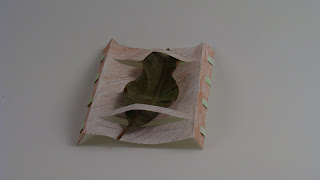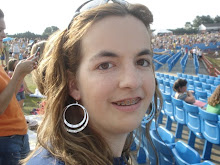 This is one of the drafting assignments I did for Stoel's class. I found it easy, except for the curves posed a bit of a challenge. Also, drafting is quite time consuming and I had a small issue with my measurements.
This is one of the drafting assignments I did for Stoel's class. I found it easy, except for the curves posed a bit of a challenge. Also, drafting is quite time consuming and I had a small issue with my measurements.
Tuesday, November 18, 2008
Venturi House
 This is one of the drafting assignments I did for Stoel's class. I found it easy, except for the curves posed a bit of a challenge. Also, drafting is quite time consuming and I had a small issue with my measurements.
This is one of the drafting assignments I did for Stoel's class. I found it easy, except for the curves posed a bit of a challenge. Also, drafting is quite time consuming and I had a small issue with my measurements.
Distance Drawings
Wednesday, October 22, 2008
1. How is dialog created?
~ a dialog is created in mine by having the two spaces directly adjacent to one another creating more of a private conversation between the two pieces.
2. How is a sense of space/place defined?
~ a sense of space/place is defined by the devision using the bristol board. Here a thicker wall is formed.
3. How is the idea of system generated?
~ An idea of system is generated mainly through the direction of the skewers. Half of they are used for structure, however, the half that don't, all move around the structure, all pointing the same basic direction.
4. How does joinery support the project concept/conversation?
~ The joinery in my structure shows the fragile nature of the spaces themselves and the conversation. A conversation can be easily torn apart if something is said to upset the other member(s) of the party.
5. How is scale utilized in the project?
~ T he two cards put together are a little shorter than the skewers allowing the skewers to protrude a little.
6. How do two-dimensional mages add to the understanding of the project?
~ The two-dimensional drawings are helpful to my project because they show more detail than the model itself could show.
7. How did the initial project idea evolve?
~ It began with a structure that resembled a box kite. I then decided to utilize the triangular forms from the unity project. The only issue was how to utilize them. I then developed a model where the two triangles, which were identical, were placed point to point and the skewers were crossed between them. This however, formed too many spaces. After this, the final product was developed, when I realized that there were only two spaces and that the model itself worked very well.
Wednesday, October 8, 2008
 This is the final of my twig project. I ended up using just green construction paper and tape. The original idea was to have the twigs in a "vase" and have the green vines coming up from the vase and tangling around the twigs. I decided to simplify that and just have the vines around the twigs. My original binding agent was supposed to be glue however this did not work so I ended up using tape which did not give me the desired outcome I wanted for this project.
This is the final of my twig project. I ended up using just green construction paper and tape. The original idea was to have the twigs in a "vase" and have the green vines coming up from the vase and tangling around the twigs. I decided to simplify that and just have the vines around the twigs. My original binding agent was supposed to be glue however this did not work so I ended up using tape which did not give me the desired outcome I wanted for this project.
Monday, October 6, 2008
Skewer Project comparison
I chose to compare my project to Erica Anderson's project. The sticks in mine cross at each end forming parallelograms out of the spaces between the sticks. While my skewers actually touch, the skewers in Erica's model only appear to touch. They form a couple of optical illusions. One is with the crossing of the skewers. They are twisted in a way where they appear to be crossing. The other is that the skewers appear to be curving. They are actually still straight lines. However, in both there was the grouping of the paper. I put two pieces together with two skewers in the middle. Erica had three pieces of paper in each of the four groups and speared on the skewers. To show that there was more than just one piece of paper, Erica curled out the corners of the two outer pieces. With Erica's model, you can turn it anyway and get the same basic view. Mine is generally the same way except that you could lay mine down and get a completely different view.
Subscribe to:
Posts (Atom)





